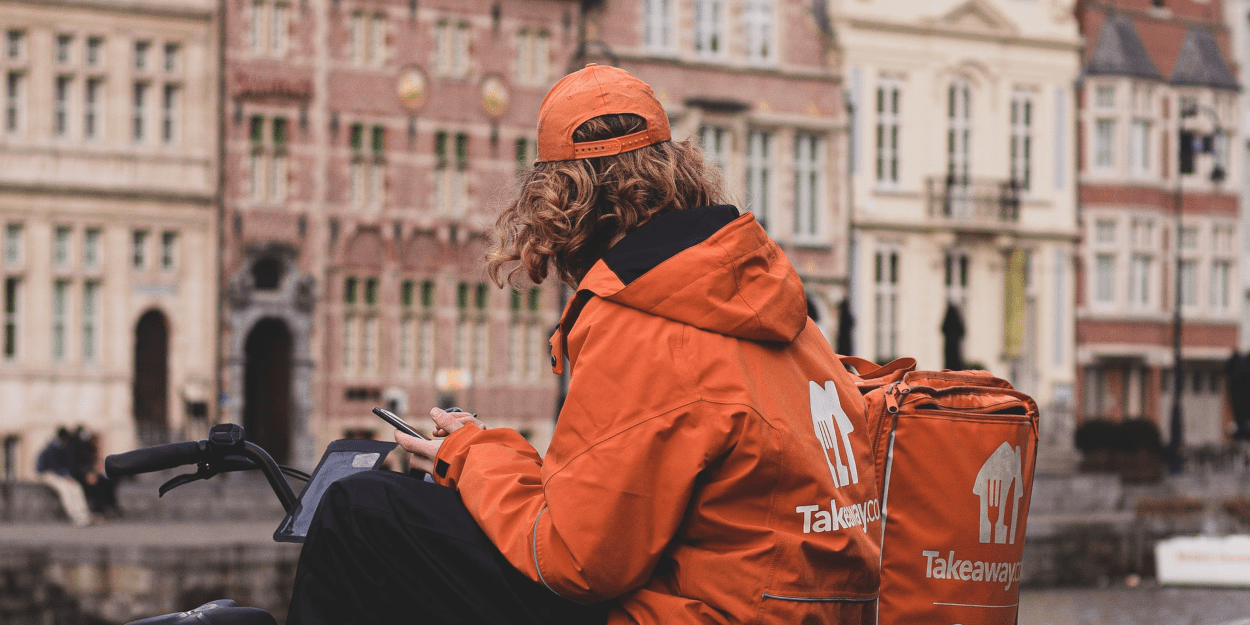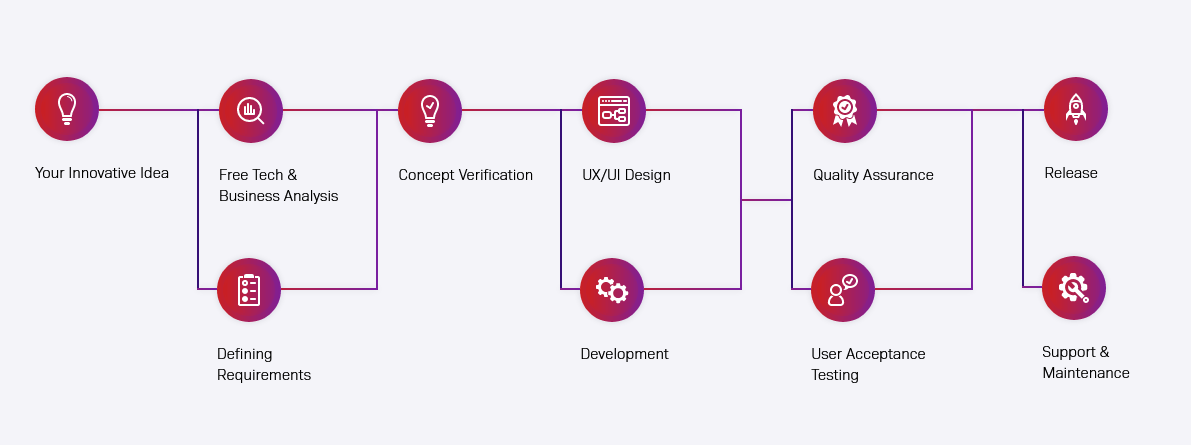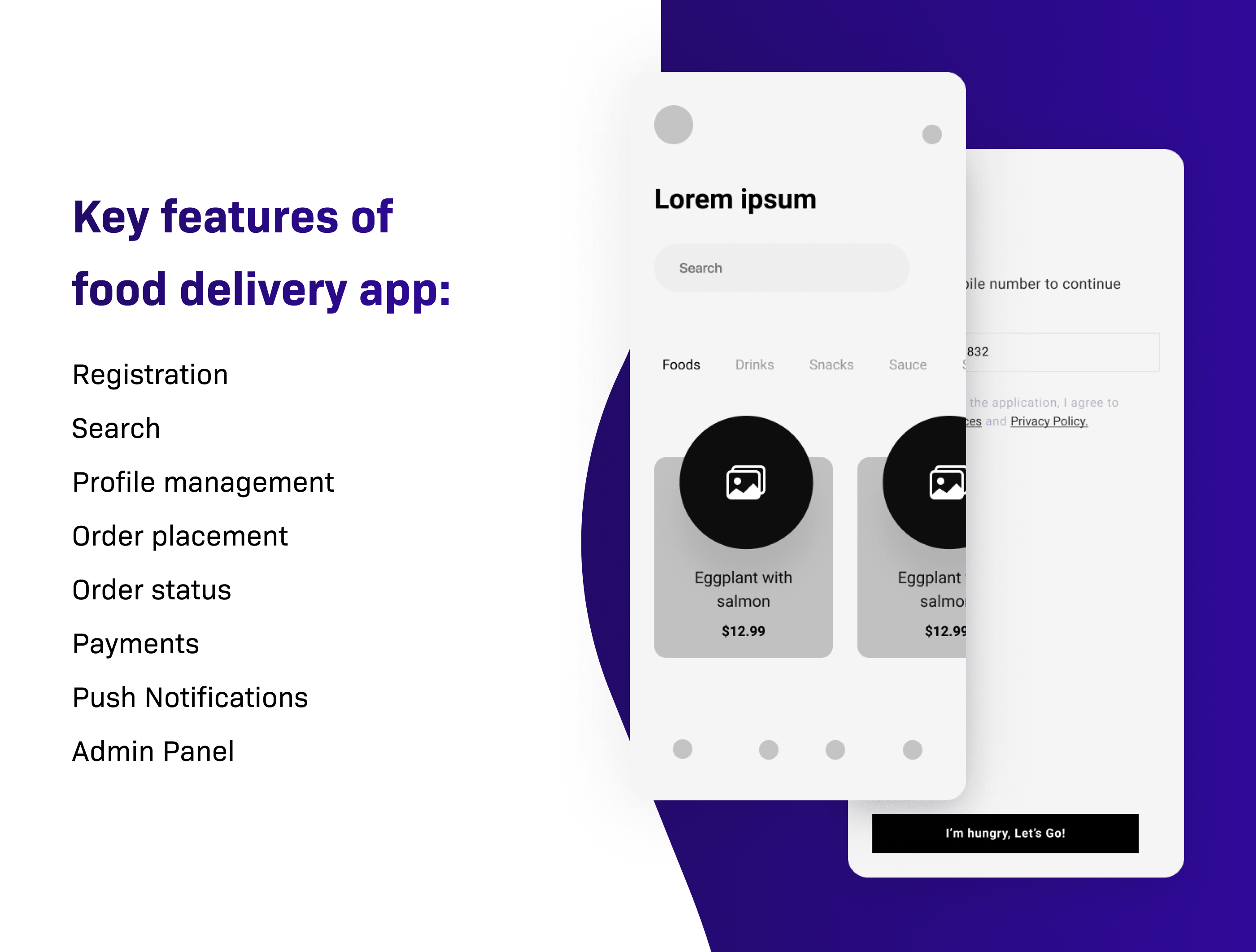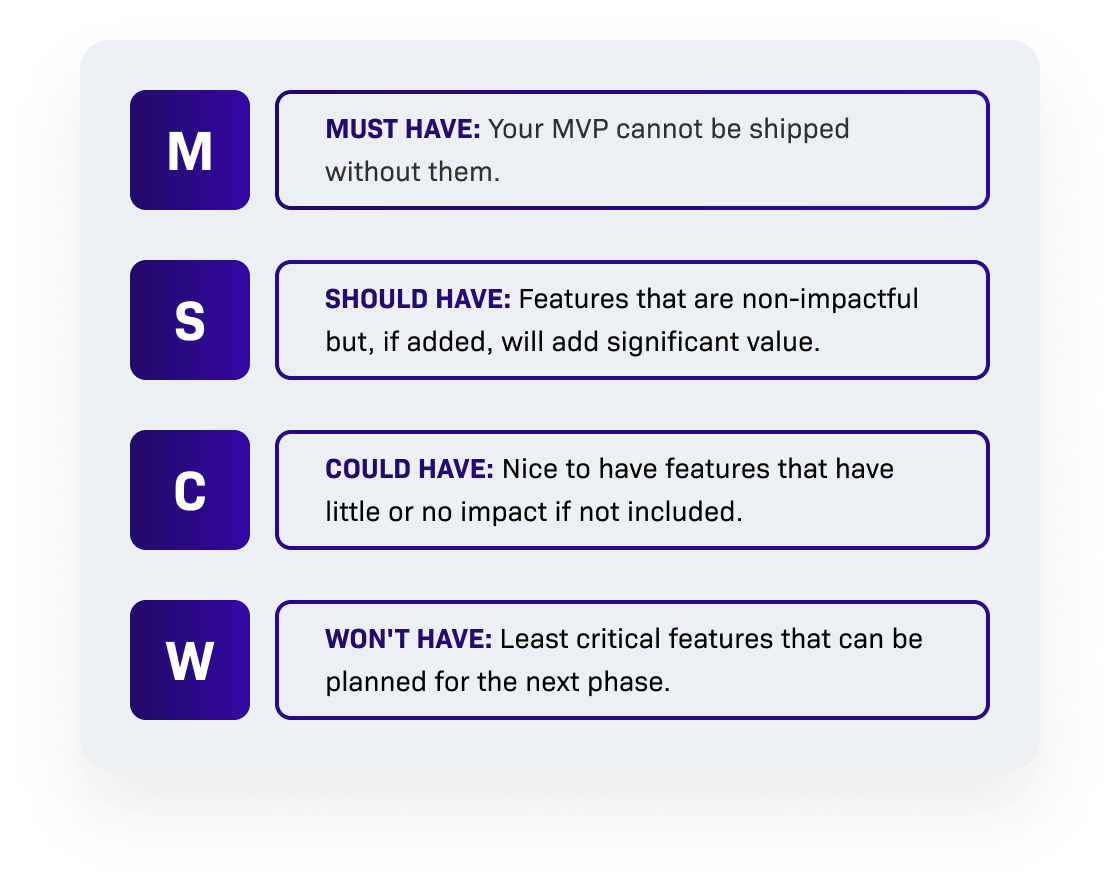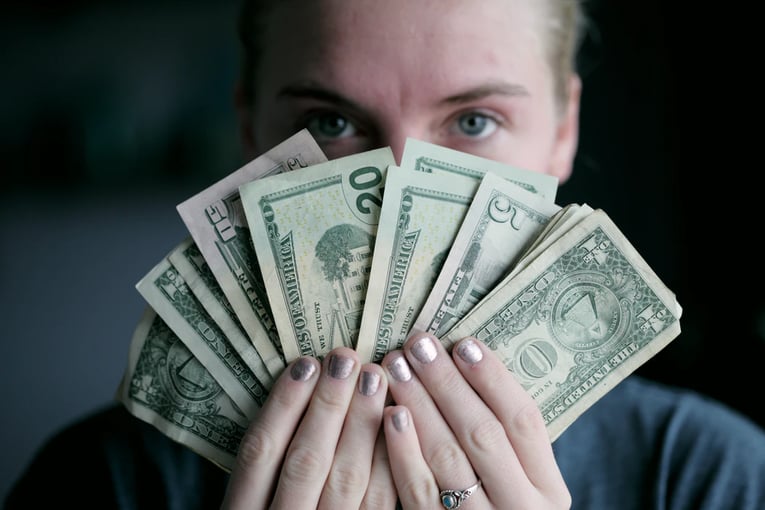Food delivery apps, who doesn't use it at least once? I have to say that it is hard for me to imagine life without on-demand food delivery apps. When I don't have an idea for dinner or simply don't have time for cooking, I reach for my phone, search for a restaurant near and within a few clicks order and pay for a meal in a food app. Then I can track the delivery time, so I don't have to worry about "Where is my food?". When the time of delivery is coming, a push notification notifies me about it. I found it as the easiest and most convenient way of food ordering.
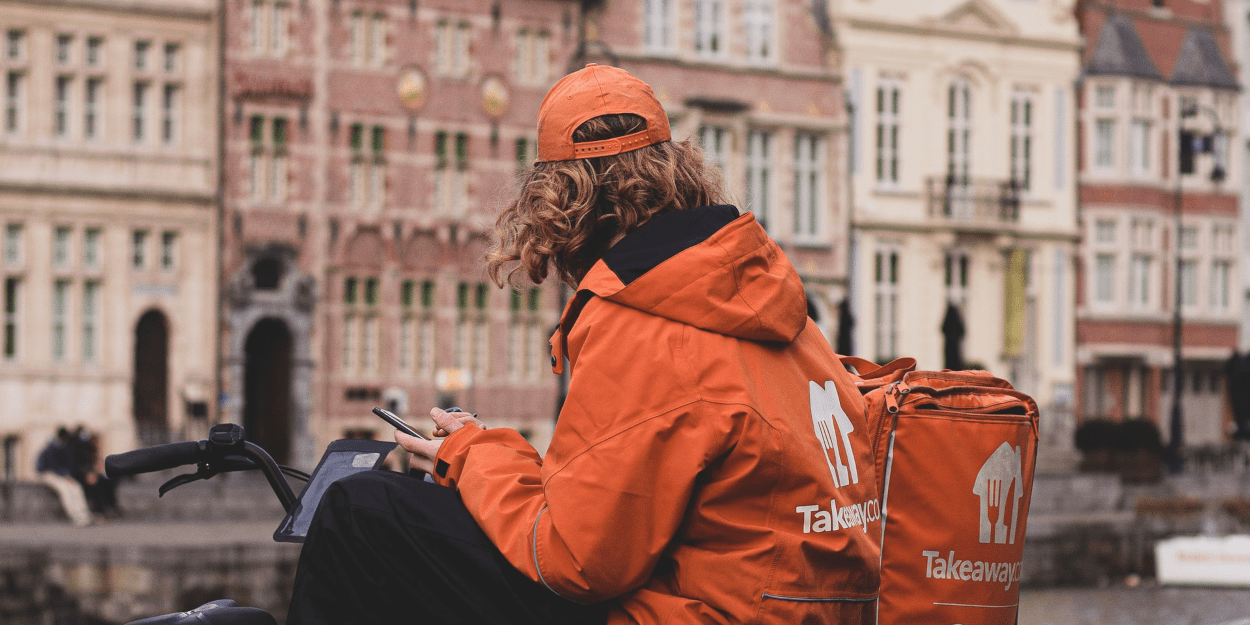
The worldwide statistics show that I am not the only one who enjoys ordering food through mobile apps. According to Business of Apps survey:
-
The USA food delivery market revenue has increased 204% in the past 5 years. In 2020 the revenue reached $26.5 billion, and it is predicted that by the end of 2021 it will reach about $41 billion. Right now there are 111 million USA food delivery app users.
-
The European food delivery market is smaller, but it has a huge potential to expand because of the lower level of competition. With 150 million users, in 2020, the market revenue is $18.9 billion, by the end of 2025, it will grow to $29.1 billion.
-
China's food delivery market is the largest in the World. This region is dominated by 2 popular food delivery apps Alibaba's Ele.me and Meituan Dianping (each of them is making over $7 billion in revenue). In 2020 China's food delivery apps revenue reached $51.5 billion, and it is predicted that in 2025 this number will double.
Table of Contents:
1. Why do we need food delivery apps like Uber Eats, Grubhub, or Deliveroo?
2. What exactly is an on-demand food delivery app?
3. What is the difference between Restaurant-to-consumer delivery and Platform-to-consumer delivery?
4. The process of food delivery app development.
5. The customer journey of food delivery app.
6. Food delivery app features.
7. Tips on how to build a food delivery application.
8. The cost of custom food delivery app development.
Why do we need food delivery apps like Uber Eats, Grubhub, or Deliveroo?
I am living in Kraków, Poland, and while walking down the streets of this beautiful city, I see many couriers with Uber Eats, Pyszne.pl, Glovo bags on their shoulders. Why is that? Door-to-door food delivery is super helpful and convenient. It doesn't just apply to food from restaurants. Every year, we have more and more opportunities that make our lives easier. Do you need new wheels? The search engine for the best car parts is already waiting for you online. And you can order with delivery, of course. Need something from the pharmacy? Glovo courier will deliver it straight to your home. I could list many examples of how the Internet and the modern world make our lives more comfortable.
People want to order with delivery almost everything. That need has been noticed by companies such as Uber Eats. Furthermore, this trend is thriving and will grow. Actually, in 2020 we observed the huge boom of food delivery applications. Between February and March, when many countries started lockdown because of the Covid-19 pandemic, Uber Eats, Deliveroo and DoorDash have all reported colossal growth of orders.

Food delivery app development on the example of Uber Eats
What exactly is an on-demand food delivery application?
The way people order and consume food has changed in the past years. More and more consumers enjoy eating meals from their favorite nearest restaurants in their homes without having to dress up and going out. Customers switched from traditional phone ordering to a digital web or mobile food apps. We call them on-demand food delivery apps because they give access to ordering at any time and online immediately payment without interaction with any person. That is the most important thing. Nowadays, people prefer to order delicious food without having to communicate with restaurant staff. Fast delivery and tracking features are also an important part of that kind of restaurant app.
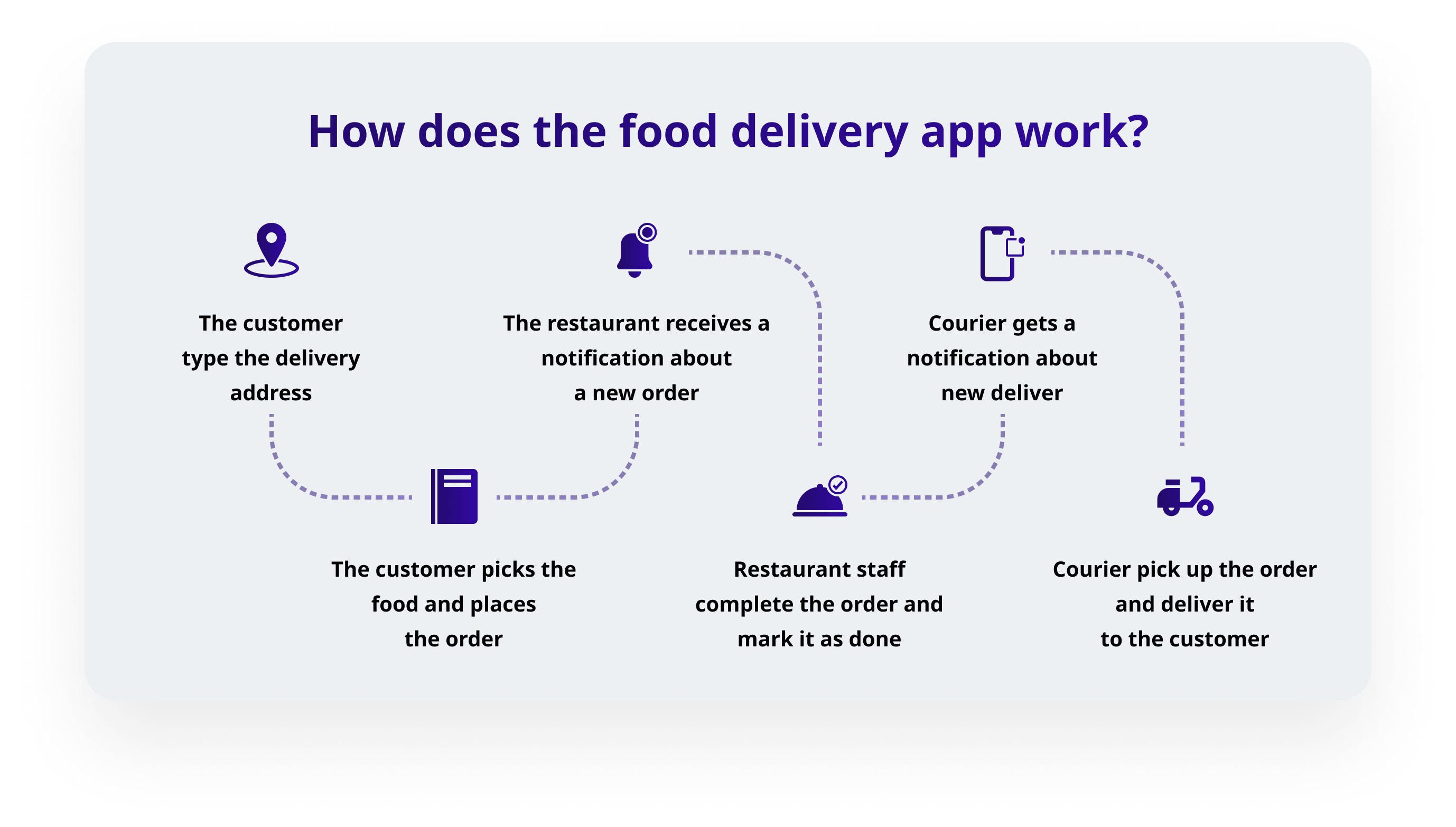
What is the difference between Restaurant-to-consumer delivery and Platform-to-consumer delivery?
As you might have noticed we have two options to choose. Ordering food through a custom application dedicated to one restaurant (like for example Shawarmer) or an app that presents a wide offer from many various restaurants (such as Uber Eats).
Platform-to-consumer delivery apps
They present a wide offer from many local restaurant chains. That's why they relevantly quickly gain a large number of users. This is the leading business advantage for restaurants. Platform-to-customer food delivery applications make it easier to attract new customers. They also do not have to worry about hiring the food courier because platforms ensure delivery personnel.
Using platform-to-customer delivery apps, users can check various menus from many nearby restaurants, read reviews, compare prices, and use promo coupons. But on the other hand, the meals are more expensive than in restaurants because of the sales commission. Uber Eats takes about 25%, DoorDash and Grubhub can take up to 30% of a restaurant's check. It can be painful, especially for small restaurants. Moreover, it is not so easy for restaurant owners to stand from the crowd. Reviews and ratings are the most important, but your restaurant will not appear on the top of the list without paid promotion and smart business model.
Restaurant-to-consumer delivery apps
They keep the whole ordering process in-house. Restaurant-to-consumer businesses have their own delivery personnel, from cooks to couriers. No third parties are engaged. The main advantage of this approach is that restaurants have full control over the food orders and delivery, so they have more options to improve their services. If any low reviews because of poor delivery appear, they can fix it by their own.
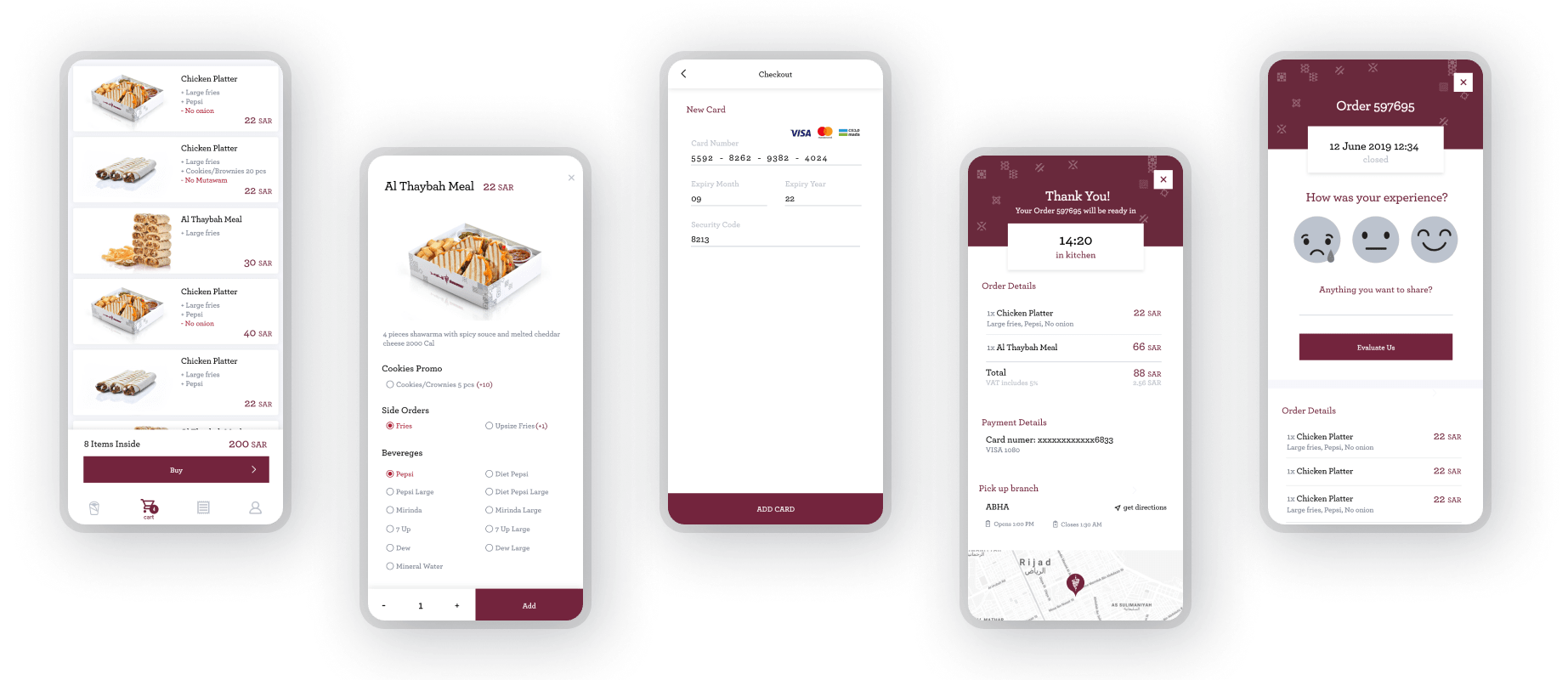
Shawarmer - online food delivery application for GCC Region
The second important benefit of having a custom restaurant app is free access to sales data. Restaurants owners can analyze who their customers are, what food they prefer and many other crucial factors. That knowledge is important to run a successful restaurant business.
Both approaches have their pros and coins. Let's sum up.
Restaurant-to-consumer food delivery apps:
-
full control over the order & food delivery time
-
access to sales data
-
possibility to build strong relationships with customers
-
no sales commission
Platform-to-consumer delivery apps:
-
access to wide number of potential customers
-
no need to hire a courier
-
possibility to promote the restaurant
The latest data from statista.com shows that in the USA, customers prefer to ordering food online directly through restaurants' websites or apps rather than third-party delivery.
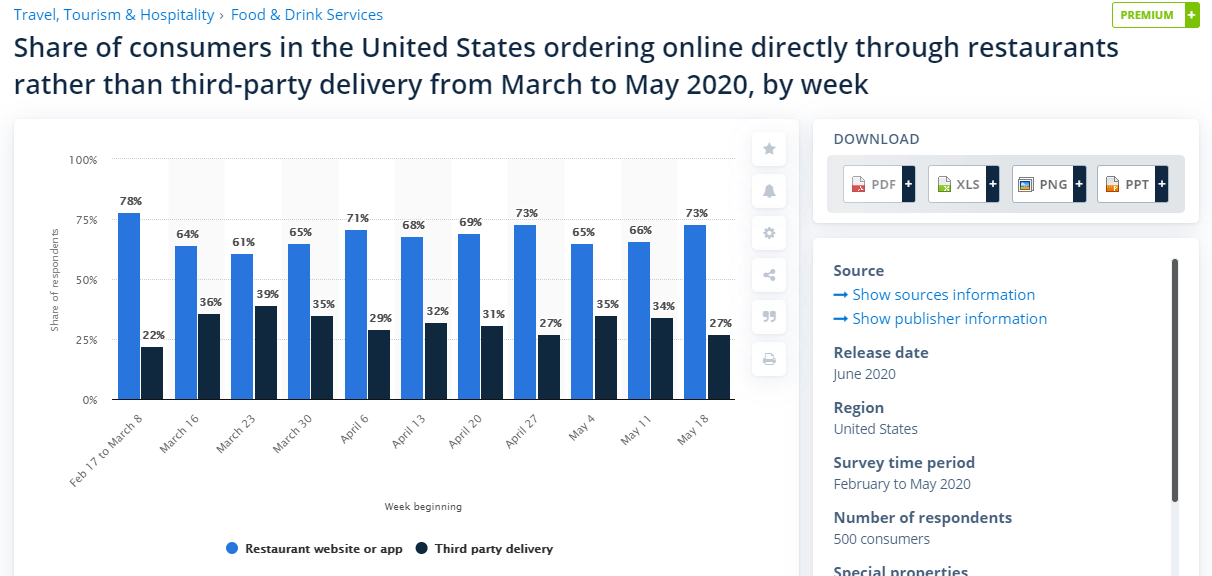
The process of food delivery app development:
Building a custom on-demand food delivery app for your business will require hiring developers and starting the app development process. It can sound challenging for a non-technical person, but there is nothing to fear with the right delivery app development company. Take a look at 6 most important steps you'll need to take to build such an application.
01 Analyze the market and define the target audience
Ok, you have your restaurant or want to build a food delivery app similar to Glovo, but do you know to whom you will address your app? The answer "To people who like to order food." is not enough. The app development market research should include market location and size, competition level, detailed target audience, and possible blockers.
02 Design the unique value proposition
A unique selling proposition is something that will highlight your future app from competitor's digital products. It is not the best idea to develop a clone of an already existing food delivery app. Users won't see any difference or value in your app proposition. So why should they use it instead of the original one? While designing UVP, you need to think about how to distinguish your product on the app market.
03 Hire solid developers
Now it is time to pick the app development team that will handle the project. While choosing the perfect match, it is wise to check the portfolio, read the reviews, ask about the number of Senior Developers on board, test the communication, and check the development methodologies. Usually, the crew consists of a few people such as UX/UI Designer, Developers, Quality Assurance Specialists, and Project Manager. Why do you need all of them? We have a whole article about this topic, but in a nutshell:
-
a Designer is responsible for preparing a pleasant user experience,
-
Front-end and Back-end Developers code the application,
-
QA Specialists thoroughly test all app components,
-
Project Manager runs the whole project, contacts you and manages the workflow.
04 Build an MVP of food delivery app
The Minimum Viable Product methodology focuses on delivering the basic version of an app in a relevantly short time. During food delivery app development, the development team focuses on the most critical features that MVP cannot be shipped without. The whole development process is divided into smaller time segments called sprints. This approach's main advantage is that we do not spend time and money on developing features that are not necessary to achieve app goals. So you can launch your product to market faster. Usually, building an MVP takes about 3 months.
The food delivery services at Railwaymen
If you are wondering how to start app development, check this article: Checklist: How To Start The App Development Project?
05 Launch and gain users feedback
Completing the food delivery app development is the beginning of your product journey. The online food delivery market is competitive, so your app has to respond to users' needs. Otherwise, they won't be willing to use it. Gaining customers' feedback is essential to stay on top of the game. You can do it in many ways, for example, through review features or analyzing usage data in the Admin Panel.
06 Plan the further development and app maintenance
All apps, web or mobile, need constant maintenance to work correctly and achieve their goals. So yes, the development cost estimation does not finish while the app is built. The pandemic of Covid-19 showed us that the market needs could change really quickly. That's why you may need app improvement in the future. Furthermore, as a food delivery app owner, you will have to follow the competitors, latest app trends and react to those variables. There is no other way to change the app than further cooperation with developers. So you have to prepare your budget for it.
The customer journey of food delivery app:
It might seem that to build a food delivery app, we have to mainly focus on restaurant guests, but in fact, we have 3 actors on the stage: the customer, the restaurant and the driver. Each of those three users should move smoothly through the application. And thanks to an excellent user experience, accomplish the intended goal easily.
Customer: The customer part of the app is the one that the guests will use. The main goal is to make ordering easy and fast. To place an order, the customer has to:
-
register the new profile or log in to the already created one
-
enter the delivery address
-
check the food menu
-
select the preferred food
-
place an order in the basket
-
make the final payment once the order is confirmed
-
track the delivery, time, and location of the courier
-
after receiving the order, the customer may decide to review the service
Restaurant: To handle orders efficiently, restaurant staff need to use an admin panel with a system that automatically changes the order status. The goal is to control and manage all orders in the best possible way. To do that, the restaurant staff have to:
-
update the list of available dishes
-
receive a push notification about the new order
-
confirm or reject the order
-
assign the staff member to prepare the order
-
view nearby couriers and pick one of them
-
notify the courier about the completed order
Driver: The part of an app with an order tracking system dedicated to the couriers so they can manage the order pick-ups. To deliver the meals on time, the courier has to:
-
receive the notification about the order
-
view the details of order and delivery
-
navigate the map
-
deliver the order
-
mark the order as complete in the app
Food delivery app essential features:
We can not start the food delivery app development without knowing which basic features we have to implement. Choosing them may appear as a challenge. It is worth distinguishing the key and the should-have features. Every feature that doesn't meet the app goal can be moved to the project backlog.
Key features:
-
Registration - this feature is necessary to register users in a base and allow them to use the delivery app.
-
Search - the possibility to look for the right meal is a must-have. Searching can be based on categories, ingredients, price or any other factors that you think are necessary.
-
Profile management - the possibility of data, username, password, delivery address, etc., is highly desirable.
-
Order placement - adding, removing, changing, and canceling items in the basket.
-
Order status - possibility to track the current order status.
-
Payments - easy access to payments inside the app. Integration with the most popular payment systems.
-
Push Notifications - immediate informing about the current order status with push notifications.
-
Admin Panel - the feature dedicated to restaurant staff that allows managing the entire food delivery service.
Should-have features:
-
Ratings & Reviews - an option that gains users' feedback by leaving the review about the restaurant, courier, and application.
-
Order history - access to all orders from the past and the possibility to require them again.
-
Favorites - the opportunity to mark and save favorite dishes for faster further searches.
-
Coupons - element of promotion that aims to motivate app users to make an order again.
-
Delivery time estimation - the information about coming delivery.
-
Loyalty programs - an option that aims to build strong relationships with users by offering them specials.
-
Social network integration - enable customers to share their thoughts about the delivery app with other social media users.
-
GPS navigation tracking - real-time order tracking with map view.
-
In-app chat - contact with restaurant staff through live chat.
Which functionalities should you definitely implement into your food delivery application? It is up to you. After gathering the background information about app users, problems they are facing, and how your food delivery project will help solve them, you will have a clear vision. Remember that features should suit your app goal and unique value proposition.
Tips on how to build a food delivery application:
As a with restaurant app development experience, we can share many valuable tips on building a food delivery or ordering app.
Tip 01 Choose the KPI's and business metrics to track
I assume you want to build a food delivery app to earn some money. To do that, you need to define your goals and business model. Some KPIs you will want to reach may be about growing the user base, increasing the number of orders, quick delivery time, keep customers satisfied, etc. It is up to you what you want to achieve, but you need to know what it is.
Tip 02 Inspire yourself with your competitors but don't build an exact copy of their app
Although it might seem to you that building a food delivery app like Uber Eats is a great idea, but I advise you to think twice about it. Why? It won't be easy to compete with the original. Secondly, are you sure your app from the start needs all features implemented in Uber Eats? I don't think so. The cost of such an app will be pretty high.
Tip 03 Consider implementing real-time order tracking in your food ordering app
Nowadays people want to know what is going on with their order delivery. Real-time tracking is something they really want, so you should think about it. I know that choosing the right features can be a challenge. The MoSCoW method is here to rescue you. This approach split all potential features into 4 main categories: must-have, should have, could have, won't have.
Tip 04 Implement easy checkout process and popular payment methods
It is what exactly we did in the Shawarmer app, a smooth checkout process with the most popular payment options in the GCC region. A customer leaving the order basket without finishing the payment is the worst scenario. So I advise you to focus on this app area.
Tip 05 Focus on excellent user experience
UX/UI design is one of the first steps in food delivery app development. And it is a highly important thing that you can not neglect. When I look at the most popular food ordering apps I see, they have one thing in common. User-friendly design and smooth navigation. You see, that is what users expect nowadays. So your app also has to deliver it.
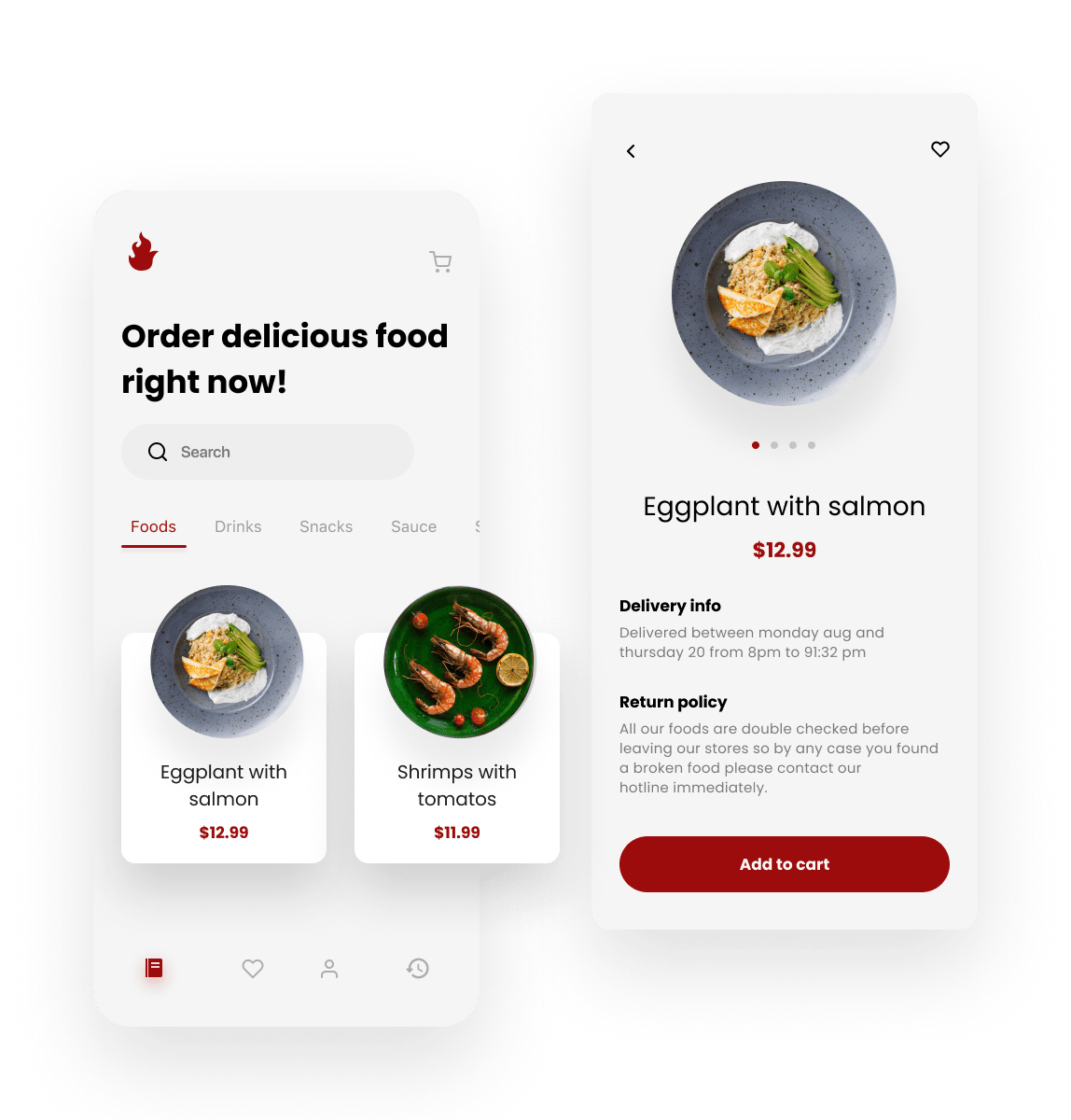
The concept of online food delivery application prepared by our Designer
Food delivery app development cost
I am sure you are wondering how much it cost to create a custom delivery application. It all depends on how advanced the app will be. To prepare an accurate cost estimation, we need some information such as the business model, type of platforms to develop, and the app's main vision (how different functionalities should work). If you give us that information, we can estimate your project within 72h.
The detailed estimation includes functional breakdown, UX/UI estimate, Developer Estimates, Quality Assurance Specialist and Project Manager participation in the project. As you can see, a lot of variables impact the price.
The price of food tech apps is slightly higher than others because developers need to implement external systems integration. At Railwaymen, we can build a basic version of the delivery application (Minimum Viable Product) for around $40,000 - $50,000, and it will take about 3 months.
Food Delivery App Development - Conclusion:
If you are thinking about starting food delivery app development, it is definitely the right time. Even if the pandemic of Covid-19 will end, the habit of food order will stick with the people for a very long time. According to eMarketer research, the number of food delivery app users will reach almost 54 million by the end of 2024. 67% of millennials say they are more likely to pick a restaurant with a food delivery option. We can not ignore those numbers. The food delivery industry is growing year to year. The potential of monetization is vast.
Thinking about your own food delivery or restaurant app? We are a team of developers who built Shawarmer, the mobile restaurant app that already reached over 200k downloads. Check what we can do for you:

